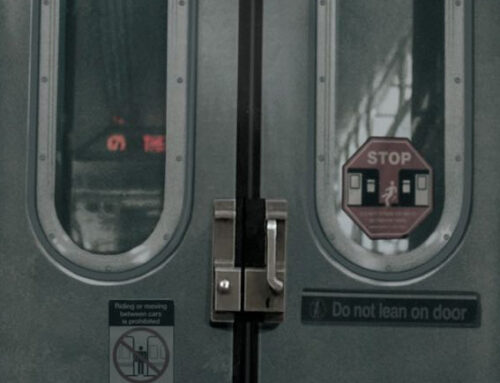Poems to See by is  an interesting twist on the average poetry collection– it’s a collection of poems illustrated and interpreted by Julian Peters in comic format. Each poem has been carefully selected and categorized according to what it helps the reader “see”. Individual sections of the collection feature four poems relating to an esoteric concept ranging from the self to time and ultimately, death.
an interesting twist on the average poetry collection– it’s a collection of poems illustrated and interpreted by Julian Peters in comic format. Each poem has been carefully selected and categorized according to what it helps the reader “see”. Individual sections of the collection feature four poems relating to an esoteric concept ranging from the self to time and ultimately, death.
Many of the selected poems are what you would expect– classics like Maya Angelou’s Caged Bird and Emily Dickinson’s Because I Could Not Stop for Death are unsurprising picks, but Peter’s illustrations grant these pieces extra flair and in some cases, poignant new meanings interpreted through a modern lens. Such is the case for Wordsworth’s The World is too Much with Us, which seems almost eerily prescient alongside Peters’ modern reimagining.
The use of comic art also makes a few of these poems more digestible, which gives the book a lot of appeal as a potential teaching tool. It’s not hard to imagine using this book to teach poetry in middle and high school, and I suspect that many students would be more engaged in learning about poetry with the addition of captivating visual aids. The book easily holds a reader’s interest because every poem is illustrated in an almost completely different style. Entries vary from pastel watercolors to detailed sketches and everything in between–there’s even one drawn in a manga art style.
Poems to See by also managed to introduce me to a few great poems which I hadn’t previously encountered. Buffalo Dusk is a standout visually and the poem is very powerful besides, and slightly more recent poems like There Have Come Soft Rains may have escaped those who do not often read poetry. If there’s any criticism to be had, it’s that Poems to See by is much shorter than you’d expect– don’t let the 170 pages fool you, there are only 24 poems in the collection and many of them are spread over several pages. The entire book can easily be read and understood in one sitting, but given the amount of work that went into the art that isn’t really surprising, as each is lavishly illustrated and visually captivating. Peters definitely succeeds at breathing new life into these poems and the book accomplishes exactly what it sets out to do. While it may be mostly unrelated to horror (mostly, because poems dealing with mortality can naturally be a bit grim) Poems to See by is worth a read for anyone who appreciates the medium.
Rating 8 out of 10 couplets







